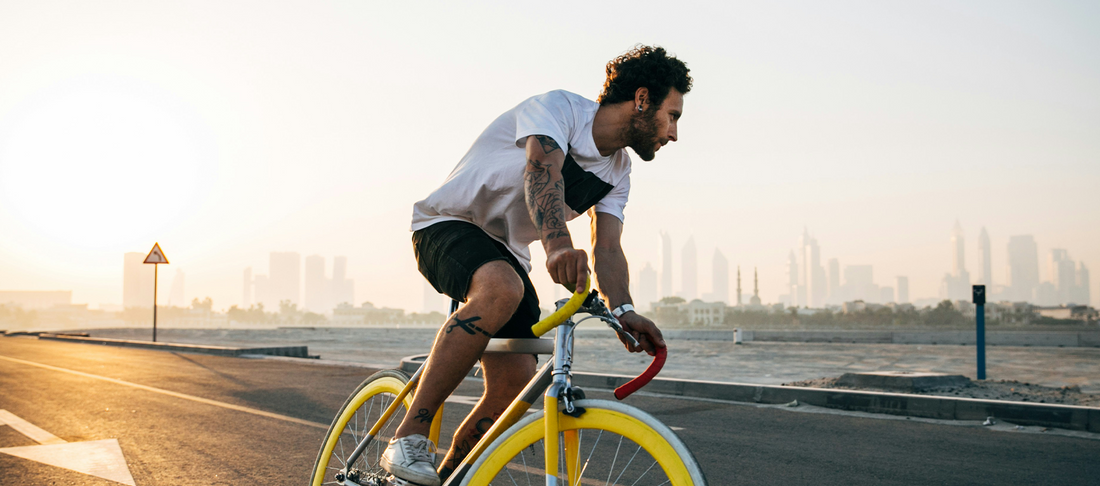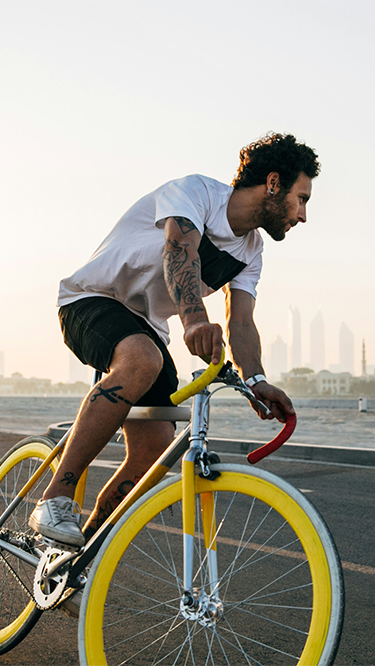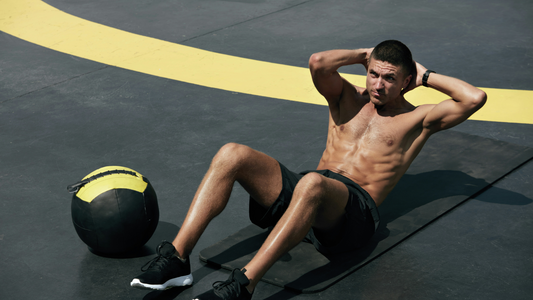

What Muscles Does Biking Work?
Cycling is an accessible, low-impact exercise perfect for people at all stages of their fitness journey. Because of the sports versatility, fitness enthusiasts can target endurance cardio or HIIT training with cycling efforts. There are also many types of biking: road cycling, mountain biking, and spin cycle, among others.
Regardless of your cycling preference, you are building strength and endurance to meet your fitness goals.
Cycling Is a Full Body Workout
Although it may not seem like it at first glance, cycling really is a full body workout. That said, some muscles are providing more power than others. Understanding the muscles involved in biking can help you improve your speed and endurance overtime.
Lower Body Muscles Involved in Biking
Lower body muscles are probably what you think of first when it comes to cycling. Our legs power us to move forward and go faster when on the bike, whether we are facing the elements outside or crushing out some difficult miles during a spin class.
Glutes
Glutes are one of the most “forgotten” about muscles in the body. Many people, including those who are active, forget just how instrumental the gluteal muscles are to everyday movement, let alone powering a bicycle. Since your gluteal muscles are one of the most powerful muscles in the body, they help supply the lower body with the effort it needs to keep you going when cycling.
Quads and Hamstrings
The quads — sometimes called the thigh muscle — are not only one of the strongest muscles in your body, they are also key to powering your bicycle. You use your quads when pedaling to push the pedal down. Having strong quads can prevent muscle fatigue on the bike.
You can think of the hamstring as the quadriceps’ “partner.” Your quads are in the front of your body and your hamstrings are in the back. These partner muscles work together to push pedals and keep your legs in a sustainable rotation throughout your cycling working out.
Calves
Biking is a team effort amongst the lower body muscles and your calves are part of that. These muscles work with the quads and hamstrings to ensure your feet keep pedaling — even when you want to stop.
Upper Body Muscles Involved in Biking
Cycling doesn’t have as heavy of a focus on upper body muscles compared to the lower body muscles. Upper body muscles, however, are still important to the overall effort of cycling.
Core & Abdominal Muscles
Sometimes the abdominal muscles seem like the glutes; you need them for nearly everything, but they often don’t get the TLC they need. Having a strong core, especially in a sport like biking, can help protect your lower back from strain and improve overall stability.
Arm & Shoulder Muscles
Don’t discount your biceps, triceps, deltoids, scapulas, and all the other muscles that make up your arms and shoulders! Cycling is lower body intensive, but having upper body strength can help you build endurance and maintain correct form.
Additionally, many cyclists need that strength to maintain good position on the handlebars throughout the ride.
Taking Care of Your Muscles as a Cyclist
Since biking works all of your muscles, taking care of those muscles is a must.
Build Strength
To care for your muscles and improve your cycling performance, consider working a biking-focusing strength routine into your exercise regimen. Strengthening your muscles helps you become a better cyclist and prevent injury in the short and long term.
Focusing on lower body exercises like glute bridges, squats, and calf raises is a good start. For the upper body, consider core work like planks and dead bugs, and build arm strength through push-ups and at-home dumbbell exercises.
Most trainers recommend adding 20 minutes of strength at the end of your workout three times a week.
Prioritize Recovery
Muscles get tired and overworked. Understanding recovery can make your overall fitness performance better. Be sure to build rest days into your exercise plan and ensure that you are getting the nutrition and hydration you need when you’re not cycling so your body can recover well.
For cyclists recovery might look like stretching and foam rolling, cold plunges, and easy recovery workouts like walking. Keep it light and easy. You don’t want to overwork your muscles and end up injured!
Work with a trainer or coach
Even though you know what muscles biking works, you might not be ready to start on a strength-building routine or training plan on your own. Working with a personal trainer or coach might be just what you need to become the best cyclist you can be.

![zf-w-[168px] zf-h-[40px]](http://zozofit.com/cdn/shop/t/15/assets/logo-desktop.png?v=117713855448369080381753069598)


